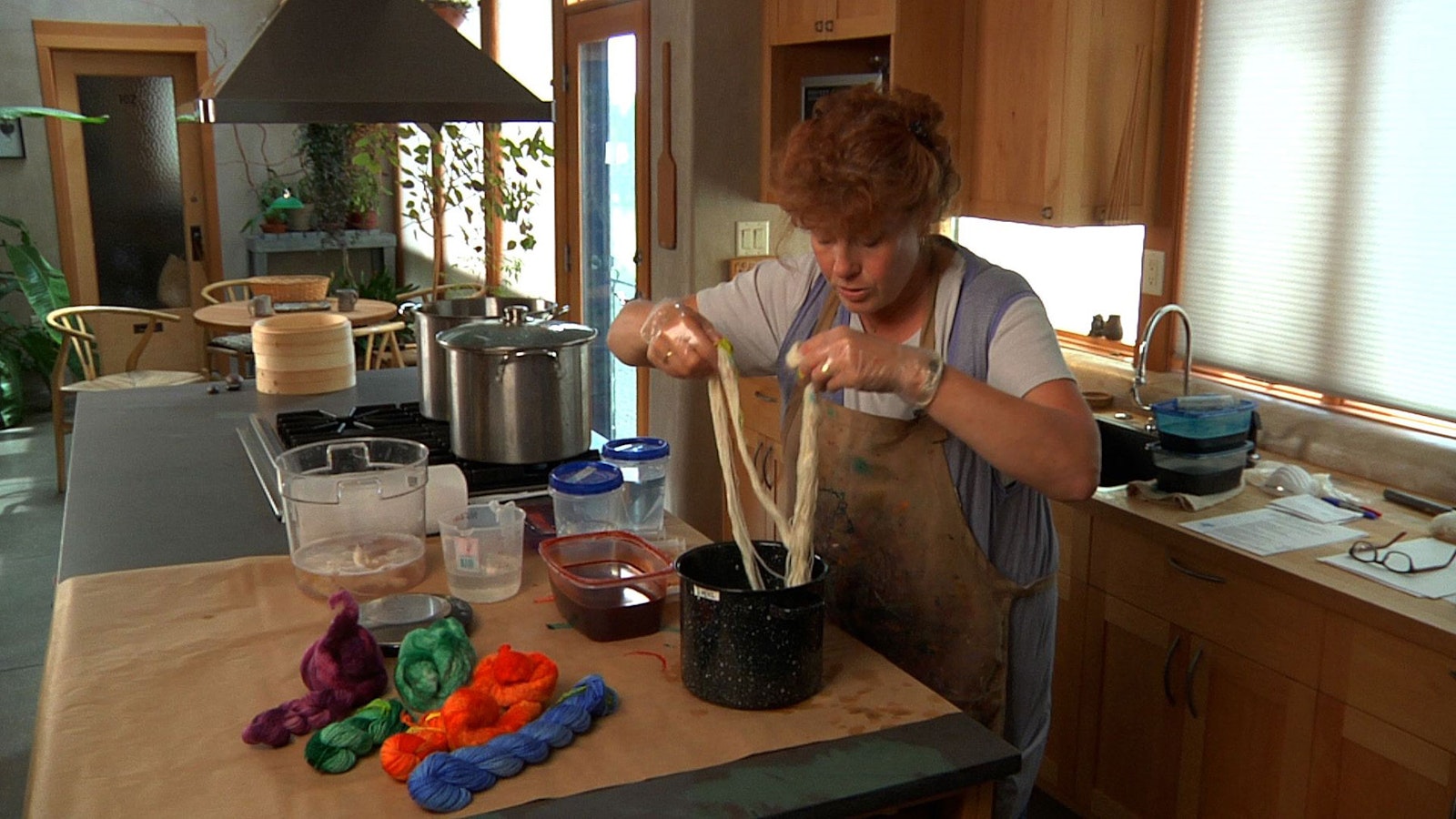Deb Menz can (and you can too)!
We all know Deb Menz is a master of color. After watching her Color Works for Spinners and Color and Yarn Design for Spinners videos, I knew that Deb had an amazing grasp of color theory and how to combine colors both to create unique yarns and projects. In my mind, however, dyeing those fibers and yarns is a very different skill set.
I was amazed to see in her latest video, Dyeing in the Kitchen, how similar her approach to color is when she is creating rather than blending it. She brings a very thorough knowledge of color theory into the colors she combines and the colors she creates.
For me, as a very inexperienced dyer, her explanations throughout the video were invaluable. She starts with the basics: equipment and safety and a rundown of the different types of dyes you can use for protein fibers. It was very interesting to learn why a union dye like Rit doesn't exhaust the same as one made just for one type of fiber and to see what an exhausted bath looks like after she demonstrated immersion dyeing. She then goes though how to create a stock solution.
Throughout the video she demonstrates different dye techniques (immersion, low-water immersion, resists, dip dyeing, creating self-stripping yarn, kettle dyeing, and painted dye) and explains how to measure the stock solutions for each. (The download also includes a very helpful math cheat sheet with all her formulas.) She also has examples of finished yarn, fiber, and/or projects to go with each technique so you can see the results you could get. I can see how the exposure to all these different techniques would greatly expand the experienced dyer's toolbox.
My favorite part of the video is when she goes through the color characteristics of Greener Shades dyes and compares them to Lanaset dyes. It was very interesting to see how the companies have chosen their base colors differently, offering different colors as warm or cool. It was also interesting to hear how this changes what you mix to get the shades you want. To explain dye formulas, Deb shares tons of sample cards that she has made comparing the different strengths and different blends of the Greener Shades dyes. Doing this exercise on your own is a key step in really understanding how to mix your own colors and how to document your results so they are repeatable.
While I have been hesitant to venture into dyeing on my own before, I'm ready to make a rainbow of my own!
Spin on,


